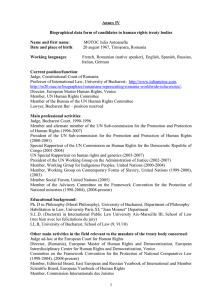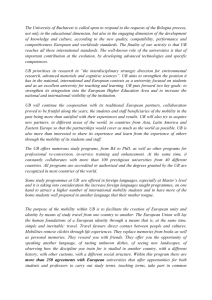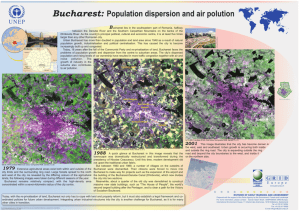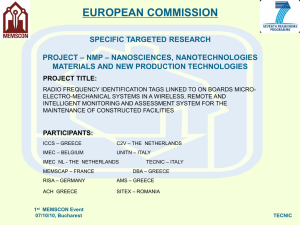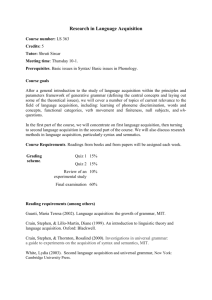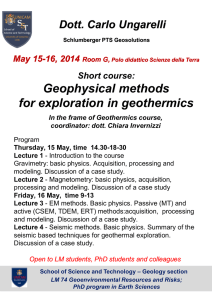DATA ACQUISITION EXPERIMENTS - A NEW PARADIGM
advertisement
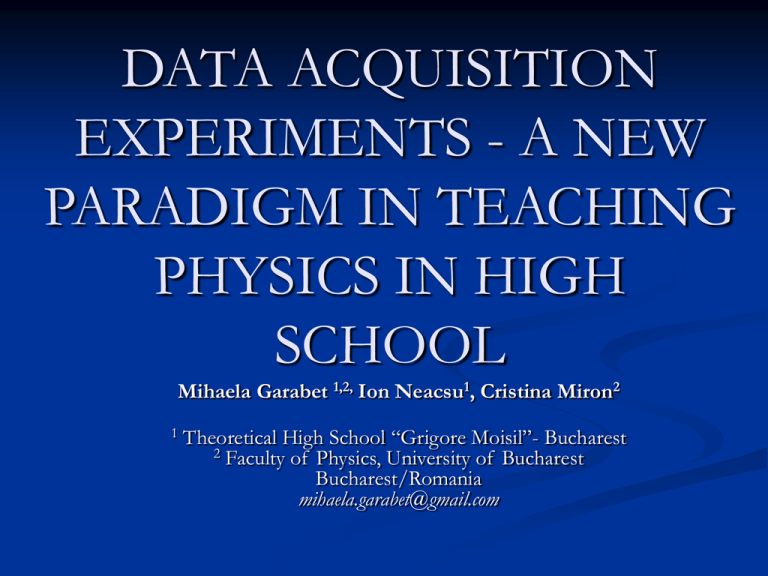
DATA ACQUISITION EXPERIMENTS - A NEW PARADIGM IN TEACHING PHYSICS IN HIGH SCHOOL Mihaela Garabet 1,2, Ion Neacsu1, Cristina Miron2 1 Theoretical High School “Grigore Moisil”- Bucharest 2 Faculty of Physics, University of Bucharest Bucharest/Romania mihaela.garabet@gmail.com The experiment in studying Physics The experiment is a method of exploring the reality directly, used largely in teaching Physics by observation provoked and guided by certain hypotheses which are to be verified by experiments. The experiment is the didactic method which puts students in the situation of provoking intentionally a process or a physical phenomenon, or of modifying the normal conditions in which these are to take place by introducing new variables so that all of these are to be studied further. Types of Experiments: The Demonstrative Experiment Qualitative Quantitative The Applicative Experiment The Experiment destined to building practical abilities The Research Experiment The Frontal Experiment The Group Experiment The Individual Experiment The Simulating Experiment Data acquisition systems Data acquisition means the sampling and the scanning of the real world in order to register data that can be manipulated by a computer. The components of data acquisition systems include appropriate sensors that convert any analogical signal to an electrical signal, then conditioning the electrical signal which can then be acquired by data acquisition hardware. DAQ system created for registering the found of a tuning fork. e-portfolio’s short description The e-collection of experimental lessons is hosted on the portal of our school. It can be accessed at: http://portal.moisil.ro, username: vizitator, password: vizitator Real and virtual in Physics and Science Lessons The registered signal in monitoring the pendulum oscillations with the graphical representation for relevance Monitoring the motion of a toy-car Educational Objectives understanding of the sound propagation explaining the phenomenon of the propagation of the sounds representing the experimental data. calculating the sound speed in the air making wise decisions in order to preserve the Nature. RESULTS - Acomplishment No. Educational Objectiv e Number of correct answers from total Class 1 Class 2 (witness) Ratio Accomplishment Class 1 Class 2 (wit nes s) Class 1 Class 2 (witne ss) 1 Obj1 21/27 20/30 77% 67% yes yes 2 Obj2 16/27 19/30 70% 63% yes yes 3 Obj3 23/27 20/30 85% 67% yes yes 4 Obj4 25/27 17/30 92% 56% yes yes 5 Obj5 24/27 25/30 88% 83% yes yes References C. Chiaverina, M. Vollmer, “Learning physics from the experiments”, Discussion Workshop Report: http://www.girep2005.fmf.unilj.si/dwreport/dwb.pdf The Ministry of Education and Research, The National Council for Curriculum, “Curriculum for the high school - Physics”, Bucharest, 2006 M. Chirico, F. Giudici, A. Sappia, A. M. Scapolla, “The Real Experiment eXecution approach to Networking courseware”, IEEE Transactions on Education, IEEE Education Society, vol. 40, nr. 4, 1997, http://www.ewh.ieee.org/soc/es/Nov1997/15/REXPAPER.HTM Miller, K. A. & Glod, A., “3-D virtual classroom technology”, Paper presented at Society for Information Technology & Teacher Education 13th International Conference. Nashville, March 18-23, 2002. Ireson, G., Hucknall, P., Kinchin, J., Parker, K., Reading, J., Wallington, R. & Williams, G., “Multimedia CD-ROMs: what do they offer to enhance physics teaching?” Physics Education, Vol. 36, March, 2001, pp. 155-167. D. Sokoloff and R. Thornton. “Using interactive lecture demonstrations to create an active learning environment”, The Physics Teacher, 35, 340-346, 1997, A.P. Fagen, C. Crouch, J. P. Callan, & E. Mazur. “Demonstrations: More Than Just Entertainment”. AAPT Announcer, 31, 126-127, 2001. http://www.ni.com http://www.vernier.com http://portal.moisil.ro Thank You!

